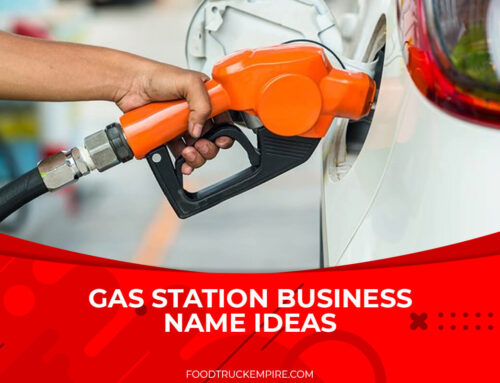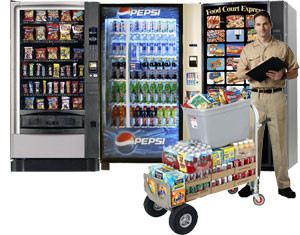
This is when we start to really GROW the business, looking for new areaa, markets, even products and services. To do this, one will have to start scaling things properly and smoothly. No large business gets so extremely successful and profitable without having a lot of people and production to back it up, and here’s how and why to get it.
Want to learn more? Get tips on developing your vending machine’s business plan here. Learn how to build a vending route here.
Selling vs Scaling
As one grows and builds their locations, builds their ‘routes,’ they will sooner or later get to that certain tipping point of having amassed a veritable selection of in-business machines under their belt. It is after this point that one’s business has taken hold, and they have a choice to make. Do you continue to grow it, adding more and more spots to grow the income, business breadth, and reach; or selling your machine route to another party for profit, from which you can then use it for some other business opportunity or to fund yourself for the NEXT round of building and placing your vending machines in new locations.
 Both options hold their ups and downs, the latter often being used by entrepreneurs with new tech ideas. In a sense it’s similar to rolling houses, spending money to get ‘makeover’ a certain area with your machines and then selling it for a nice little profit, only being able to get some money rolled back while it’s happening; in fact it’s required, the route needing to develop to a smooth and steady income flow before it has any chances of being a tempting buy. The great part about going this route is the ability to manage and run everything by yourself, with little to no need for any extra help as you find and put together a smaller number of locations over and over again. It also allows for a faster and more immediate profit bump.
Both options hold their ups and downs, the latter often being used by entrepreneurs with new tech ideas. In a sense it’s similar to rolling houses, spending money to get ‘makeover’ a certain area with your machines and then selling it for a nice little profit, only being able to get some money rolled back while it’s happening; in fact it’s required, the route needing to develop to a smooth and steady income flow before it has any chances of being a tempting buy. The great part about going this route is the ability to manage and run everything by yourself, with little to no need for any extra help as you find and put together a smaller number of locations over and over again. It also allows for a faster and more immediate profit bump.
O n the other hand, in order to be able to sell the route for what you believe it to be worth, you then need to do a LOT of work and research to compile a pitch that proves to the local buyer that it’s worth their payment. Not to mention that, if handled well and properly, that potential profit which they’re getting out of it COULD have been yours.
n the other hand, in order to be able to sell the route for what you believe it to be worth, you then need to do a LOT of work and research to compile a pitch that proves to the local buyer that it’s worth their payment. Not to mention that, if handled well and properly, that potential profit which they’re getting out of it COULD have been yours.
For though it’s not immediate, the benefit to continuing with expansion while keeping all machines, again so long as it’s being done really well, is a much higher return in money over the long run. But as it gets bigger, there becomes more that needs investing; more machines to buy and handle, people that need hiring to keep track and manage over it all, you actually are turning into a company. The effort can certainly be rewarded, but it needs the effort to have a chance of happening.
The final choice is yours, depending on what your particular long-term hopes and goals are with this. If looking to sell, then that’s all there is to it; find a local buyer, show them the advantages (locations all close together and thus saving gas, strong customer interest, unique ideas, etc), sell and then go back to doing all the other things we’ve talked about in this book. But if you’d like to continue, then here are some things best left considering.
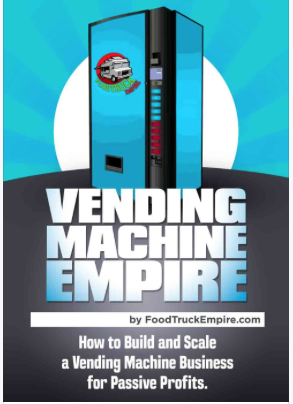 Locations Locations Locations, Yet Again
Locations Locations Locations, Yet Again
The importance of location has already been touched upon a few times, and there should be no need for reminder that one should ALWAYS be looking for new locations, especially if you’re the path to Selling solidly made routes after fixed periods. Seriously here though, this is a full requirement for a successful long-running vending business either way. One has to keep looking and searching with the same fervor as when they started, trying to get into new potentially profitable locations on a regular basis.
Obviously this is done to build profit and income sources for the year, but there’s an even larger, daunting reason why this habit is such a necessity. For at the end of the day the fact remains, no matter how tasty and popular your snacks, or how well your business and customer skills are polished, none of your machines will last forever. The time they spend in each location is definitively finite. There will always be some reason or time where it’ll be removed, whether it no longer (or never) does well with local crowds, trends change, the area proves too dangerous to keep there, or the building gets renovated/taken down. As for when this will be, it’s also just as ambiguous, lasting everywhere from 20+ years to 6 months.
Thus we need to keep looking, if anything to find locations that can REPLACE the ones we will no doubtly lose at some point in the future. Not to mention to increase the Market Awareness; for though you’ll want to start locally, sooner or later it shall seem like the number of ‘ideal options’ which you figured out so long ago are drying out, and the best place to look from there is BEYOND. And as you place and explore further and further, the more people in the know learn about your vending business and/or product. Doing this is easy, all one has to do is expand their circle, look for similar locations, and continue from there (the only issue sooner or later, as distance increases, is getting there, easily solved once employee and office growth is implemented, see below).
One can also look back into OLD locations that originally decided they didn’t want you in. After some time in the business, having proven your machine successful and very well liked by each location’s demographics, head back to an area owner/manager who previously said ‘no’ and show them the work that you’ve put into it. You never know, they could easily change their mind.
That’s not even considering the ability to implement your machines into once-thought-unprofitable locations due to the change in demographics, new businesses, or even new changes/improvements/diversification to your own product offerings (if you get into it, which we’ll discuss in a bit). A whole world of options can and will open up the longer your business remains in tact and in the market, all one has to do is look for and get to them.
 The Need of Hiring
The Need of Hiring
The fact remains that the more the business expands, the more machines that get set up, more people to deal with, more product you need to make/get in, then the more you’ll need extra help and hands. You’ll only be able to continue going out and doing everything yourself for so long, but at some point things will need to get delegated so you actually have time to handle orders, organization, and future business management. Ultimately the tasks that you want to hand out to others and keep for yourself is up to you, but it’ll become really clear rather soon which tasks YOU need to keep hold of to ensure the successful running of the business to your interests.
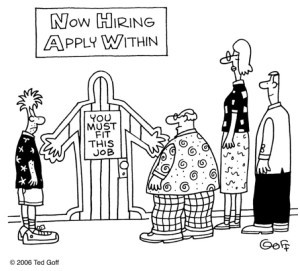
As for the actual hiring, there are multiple resources one can use and follow, a lot of job sights which you can place listings on for potential job seekers, such as Monster, Career Builder, etc; if going this route, you’ll want to look for the all-purpose ones, so far as I know not any vending-specific job sites. Some of these CAN cost some money to place in however, so take that into consideration. And know it is no shame to use Craigslist for looking for employees; it’s absolutely free, there are PLENTY of people who frequent listings, and it’s an easy setup. Simply note that you’ll likely have to re-post the listing every couple days.
If one is really finding trouble getting applicants, or hiring the RIGHT employee, even after these efforts, than there is the last resort of having others find them instead. It can pay quite heavily to work with Temp Agencies, External/Contingency Recruiters, and Head Hunters, in both senses of the term. They can more easily help to find the right people for the needed positions, however it WILL come at a cost to you, depending on what agencies and particular services one tries to find (for example, contingency recruiters only get paid if THEIR applicants are hired on). So consider them with caution.
Bases of Operation
Rising locations and a growing force of people to handle it all, you may just as well have an industry on your hands somewhere down the line. As this industry grows and you’ve developed enough of a need for a certain number of employees under your belt, then there may be need to set up a few offices to handle different regions; no matter how many employees or how well one handles it, no business owner is going to want to drive 100+ miles at least once a month just to service a few machines.
 When doing this you’ll need to take into consideration the extra costs in rent and in shipping of the machines and product to each base for their use (if neither of them aren’t already being made on-site, in which case you’ll want to look into the need for a production site nearby each base of operation vs all handled where YOU are) and whether it justifies the potential savings in other costs and ease of profit from the higher area accessibility. Obviously we’re not talking about just doing this a couple cities over; truly this IS in the situation where one might have extended their reach on the other side, or in entirely different, states.
When doing this you’ll need to take into consideration the extra costs in rent and in shipping of the machines and product to each base for their use (if neither of them aren’t already being made on-site, in which case you’ll want to look into the need for a production site nearby each base of operation vs all handled where YOU are) and whether it justifies the potential savings in other costs and ease of profit from the higher area accessibility. Obviously we’re not talking about just doing this a couple cities over; truly this IS in the situation where one might have extended their reach on the other side, or in entirely different, states.
Researching and being aware of local regulations for shipping, storage, and builds (whatever duties you want each location point to take charge of) should be on one’s mind, as they can easily develop slight alterations amongst the different counties, let alone the states. And though it should affect one with little to no actual notice, it’s always a good idea to double check so as to avoid any clear catastrophic situation.
And if you have gotten to this step, having successfully developed one or two extra locations (which YOU will want to start managing yourself initially before handing off to a Manager) to handle the wider area, then Congratulations. You have now taken your first step into starting an empire.
Always Seeking the New
If there is one constant to the world and business as time passes, it’s that there is no constant. Things change, they’ll always change, and you have to be able to change along with it to be successful. One cannot expect to offer the exact same product from the same machine over the decades and expect to keep growing, let alone even stay profitable. Not only can area demographics change and open (or close) up possible locations for your machine, but staying up to date on trends, popular interests, advancements, and issues in terms of food service is absolutely mandatory; not just as obstacles to navigate, but as resources that you as a business owner can use FOR the company.
For those with classic snack, soda, and other multiple-choice vending machines, always be on the lookout for new products that can be moved into your machines. Make note of what kinds of flavors and products are popular in media as each season rolls on and take advantage of it. Look into replacing some of the regular slots on machines in older locations just to offer a diversity from the same old options, at the very least to keep the machine interesting and exciting over the years.
If you’re working with unique vending machines, such as 1-2 option listings (or anything on the lines of those new cupcake, pizza, and other interesting food styles) that you yourself probably have a hand in producing, see what you can do in adjusting recipes. Add some bacon on one of those burgers, pop in a spice to the hot chocolate option, switch up the cupcake/bread/whatever styles and flavors every week or so, and put a sign on the machine letting people know the new and exciting update!
Look into seeing if there’s MORE options you can add in that could go appealingly well with other items; take, for example, those banana vending machines made in the style of snack machines, but only filled with bananas. What if one put packs of chocolate sauce and nuts on the bottom row for a quick and simple make-your-own dessert when combined with the fruit? Things along those lines can certainly pique the interest of loyal customers. Simply take a look at what options one has and utilize it to its full potential.
T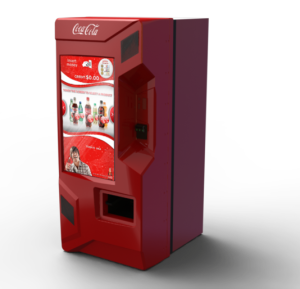 hough of course a machine can only do so much based on its design… which is why it also needs just as much attention, and you have no excuse to not look into it every year. Technological improvements are being constantly made, new and better machines made every year; one can’t assume that your models are going to be seen as the most favorable year after year. New customers can easily be dissuaded by a more attractive vending option, and area managers are less likely to agree to your machine if there’s a competitor offering something that’s proven to work smoother and better for people.
hough of course a machine can only do so much based on its design… which is why it also needs just as much attention, and you have no excuse to not look into it every year. Technological improvements are being constantly made, new and better machines made every year; one can’t assume that your models are going to be seen as the most favorable year after year. New customers can easily be dissuaded by a more attractive vending option, and area managers are less likely to agree to your machine if there’s a competitor offering something that’s proven to work smoother and better for people.
Which is why you should always keep in contact with those who build your machines (or if you’re doing it, look into it yourself) to see what improvements can be made every year or so. Even if you can’t make tech improvements, see about changing the design up, trying to get more attractive displays, shapes, and viewing designs for the options within (this of course mainly applies to the non-standard vending machines). And if, after most of a decade or somewhere along the line, you do see the need and interest for a better machine but find upgrading the machine to be impossible, either at all or just to a certain point, then you may want to consider simply scrapping what you have now and getting a different, more up-to-date machine design built for the business instead going forward. If you ever sell your route, this certainly becomes an easily viable consideration to take into mind for each new business venture; there’s nothing telling you to keep doing the same kind of machine every year or so.
However it’s done, the fact remains that the future of your vending business is determined not just by scaling the size up higher and higher, but being able to adjust its shape to better fit the existing mold that defines the world of customers which you’re so trying to reach. So long as that’s kept in mind, you can officially take your first step into the future of this exciting new venture in self-employed industry. Take all that you have learned from these chapters, manage the pen-and-paper part of it, and use your personality and vision to burst those ideas and products through and into the market with a Wow.
From here, we wish you a sincere Good Luck in everything that is to come, and Thanks for reading!




